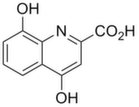We offer a Free Trial Program for both our loyal customers and those researchers who are new to Hello Bio!
To receive any free trial offers that you are eligible for, you must be logged into your account.
If you are already a Hello Bio customer - unlimited* free trials!
- When you see the Free Trial icon, simply add your chosen free trial to your basket, along with at least one other product.
- To order direct, log in to your account and at checkout enter the code FREETRIAL - your free trial pack will be discounted (see Terms & Conditions below). This will be itemized on your invoice.
- If your purchasing team will be placing the order on your behalf, log in to your account, use the generate quote feature and enter the code FREETRIAL when prompted. Give the quote number to your purchasing team to include with the order, and your free trial pack will be discounted.
- You can claim unlimited* free trials per calendar year, on selected products that you have not purchased previously.
- You may only claim one free trial per order. See below for full Ts and Cs.
If you are new to Hello Bio - one free trial, plus free delivery!
- If you have never purchased from Hello Bio before, we offer a Try Before You Buy! Simply Add your chosen Free Trial Pack to your basket, create an account and enter the code WELCOMEOFFER at Checkout. This is a no obligation offer and no other purchases are necessary. Your Free Trial will be discounted at Checkout and there will be no delivery to pay.
- If your purchasing team will be placing the order on your behalf, log in to your account, use the generate quote feature and enter the code WELCOMEOFFER when prompted. Give the quote number to your purchasing team to include with the order, and your free trial pack will be discounted.
Using the Quote Generator?
- If you are using the quote generator, and wish to access the Free Sample Program you must first log in to your account to enable any relevant free sample offers to appear. Please note, if you do not first log in, you may see offers that you are not eligible for. See below for full Ts and Cs.
Terms and conditions
-
*Free trials are only available on selected products. When there is a Free Trial available for a particular product it will be displayed on the product page.
-
You need to be a scientific researcher (or ordering on behalf of a scientific researcher) to access the Free Trial Program.
-
Researchers who have an online account and can be identified as previously having made a purchase from Hello Bio, either directly or indirectly via a purchasing team ("customers") will be eligible for unlimited* free trial products in 2025.
-
Researchers who have not made a prior purchase from Hello Bio are eligible for 1 free trial product with free delivery in 2025.
- Researchers who have not made a prior purchase from Hello Bio must use their institutional email address (not a personal email address) when claiming their free trial.
-
Customers may only claim one free trial per order and may not claim the same free trial product more than once.
-
Customers can only claim free trial packs of products that they have not purchased previously.
-
This offer can’t be used with any other offers
-
This offer is not valid for resellers or Hello Bio distributors, and the free products are not for resale.
- This offer is not valid for researchers placing their orders via a 3rd party (eg. distributors)
-
Free trial offers are only valid whilst stocks last.
- If a Free Trial product is not in stock, no alternative product will be offered.
- Researchers who access the Free Trial Program will receive a request for feedback about their free product, and a follow up email, which they can unsubscribe from at any time.
-
And finally - we do reserve the right to change these terms and conditions at any time!
If you have any other queries, just email customercare@hellobio.com (for customers in the UK, Europe and Rest of the World) or customercare-usa@hellobio.com (for customers in the USA & Canada) and we will be happy to help.










